Figuring out what to charge isn’t just a numbers game — it’s one of the toughest challenges fishing charters and guides face. Between rising fuel costs, seasonal demand, and a flood of budget operators driving prices down, it’s easy to feel pressured into undercutting your own value.
But long-term success doesn’t come from being the cheapest option on the dock. It comes from knowing your worth, understanding your market, and building a brand and experience that justify your rates. If you want to charge more — and actually book trips at that rate — you need to deliver the kind of experience that makes it a no-brainer for your customers.
Understand Your True Costs

Before you can price your trips with confidence, you need a clear picture of what it actually costs to run a charter. Too many fishing charters and guides only consider obvious expenses like fuel and bait, but that’s just the start.
Take the time to list out all your costs — not just the ones that happen on the water. These include:
- Fuel, bait and tackle
- Boat payments and insurance
- Maintenance and wear on gear
- Licensing, permits and taxes
- Marketing, website and booking platform fees
- Your time spent prepping, cleaning, emailing and maintaining your business
Your pricing should reflect everything it takes to deliver a great experience — not just the hours you spend fishing. If you’re not accounting for the full picture, you’re probably undercharging without realizing it.
Know What You Offer That Others Don’t
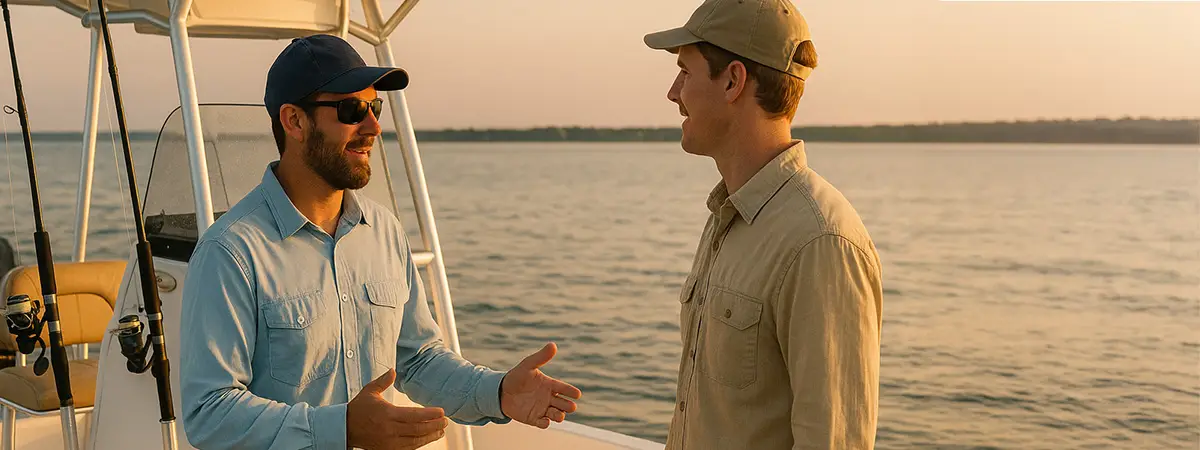
Not all fishing charters and guides are created equal — and that’s exactly the point. If you’re offering a better experience, using higher-end gear or fishing harder than your competition, your pricing should reflect that.
But here’s the catch: most customers don’t know what makes one guide better than another just by looking at trip titles or rates. They’re judging you based on what they can see — your photos, reviews, website and overall presentation.
Ask yourself:
- Do you fish more thoroughly or work harder to find quality bites?
- Do you offer custom rods, fly fishing or top-shelf gear?
- Is your boat cleaner, newer or more comfortable than others in your area?
- Are you known for great service, fun trips or repeat clients?
The things that make you different — and better — are exactly what justify charging more. But they only help you if customers actually know about them. If your charter looks like everyone else’s on the surface, you’ll always be judged on price alone.
Know Your Local Market — But Don’t Let It Own You

Fishing charters and guides don’t price in a vacuum. What others are charging in your area absolutely matters — and you can’t ignore it. If the going rate for a half-day in your town is $600, you’re probably not going to get many bites at $900, no matter how good you are.
That said, too many guides set their pricing by simply copying whoever’s charging the least. That’s a mistake. You should be benchmarking against the best operators in your area — not the ones racing to the bottom just to stay busy.
Here’s how to look at local pricing the right way:
- Research other charters that offer trips similar to yours in style, target species and trip length
- Focus on what the top-tier guides charge — especially those with strong reviews, repeat clients and polished brands
- Identify how you stack up and where you can differentiate or improve
You don’t have to be the cheapest. You just have to be competitive for the level of service and experience you deliver. There’s always a ceiling in any market — but most guides are leaving room on the table by setting prices too low out of fear.
Undercutting Hurts Everyone
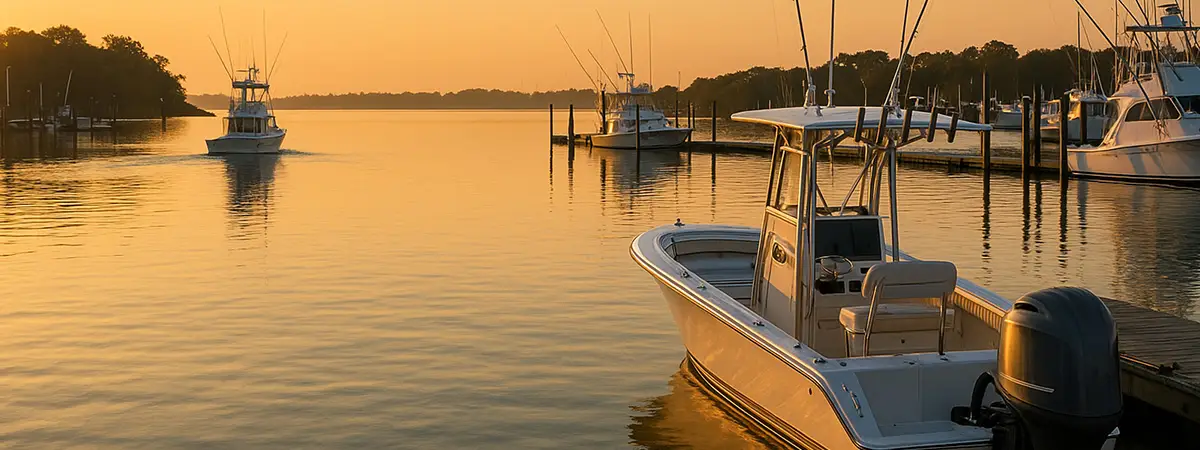
A quick word about undercutting — there’s nothing wrong with being competitively priced, but there’s a big difference between fair pricing and constantly chasing the lowest number. When too many guides in one area start dropping their rates just to book trips, it doesn’t just hurt their own business. It drags down the perceived value of fishing charters and guides across the board.
When that happens, customers start treating trips like a commodity — something to price-shop, not something to value. And once that mindset takes hold, it becomes harder for every guide in the area to stand out or charge what the job is actually worth.
Your Price Must Match Your Brand
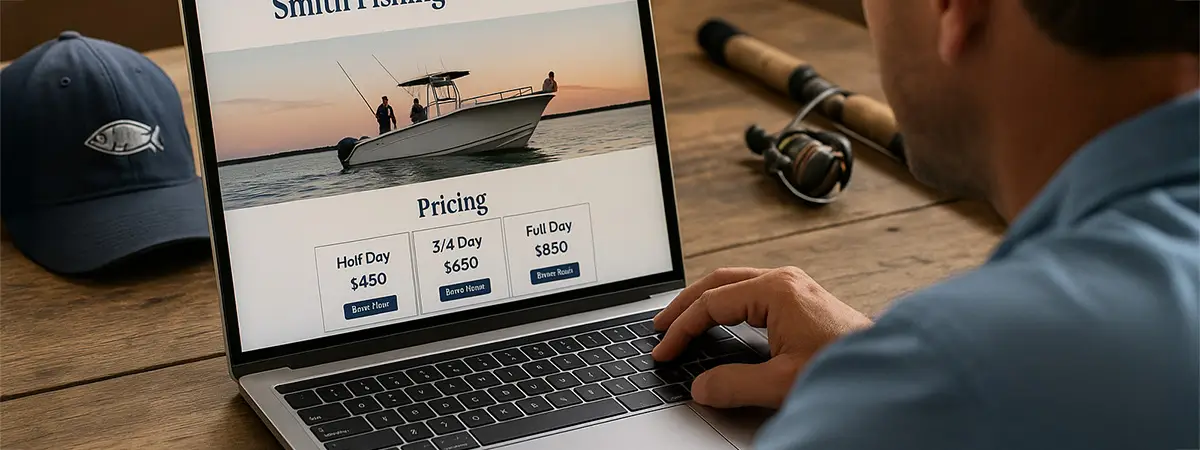
If you’re going to charge more than the average guide in your area, your charter needs to look and feel like it’s worth it. That doesn’t mean having a huge budget or flashy logo — but it does mean having a brand that reflects the kind of experience you’re offering.
Anglers don’t just compare prices — they compare what they see. If your website looks dated, your photos are low quality or your reviews are thin, they’re going to assume your trips are average. On the flip side, a clean site, great photos and clear, confident messaging can justify higher pricing before a customer even calls you.
Premium pricing starts with a premium presence and delivering an experience that backs it up. That means investing in:
- Clear, mobile-friendly website that showcases your trips and personality
- Strong reviews that reinforce the experience you promise
- Professional photos of your boat, gear and happy clients
- Trip descriptions that set expectations and make booking easy
Of course, being one of the best guides on the water still matters — and in some cases, it’s enough to keep your calendar full without a polished brand. But for everyone else, the way you present your business plays a big role in what you can confidently charge.
Top Pricing Requires a Top Experience
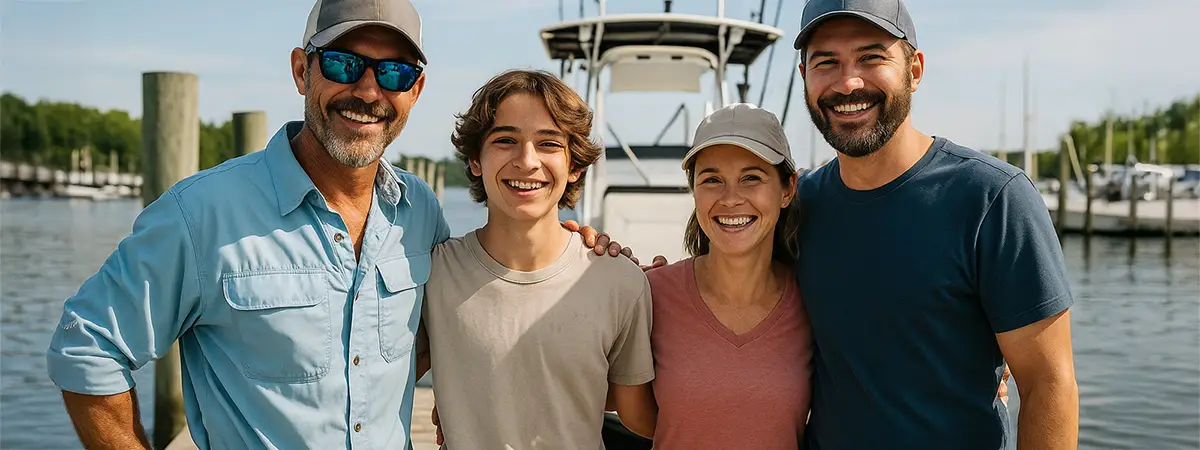
Charging more only works if the trip lives up to the price. For fishing charters and guides trying to position themselves at the higher end of the market, delivering a great experience is non-negotiable.
That doesn’t just mean catching fish — although that always helps. It’s about the full experience: showing up early, having quality gear, keeping your boat clean and treating every client like they matter. These are the things anglers remember, talk about and write reviews for.
Reputation and word-of-mouth play a huge role in justifying your pricing. If you’re not already known as the go-to guide in your area, every trip is an opportunity to build that kind of trust — and earn your way into those top-tier rates.
If you’re charging more, your clients should walk away thinking it was worth every penny — not questioning whether they could’ve had the same trip for less with someone else.
Stop Competing with the Bottom
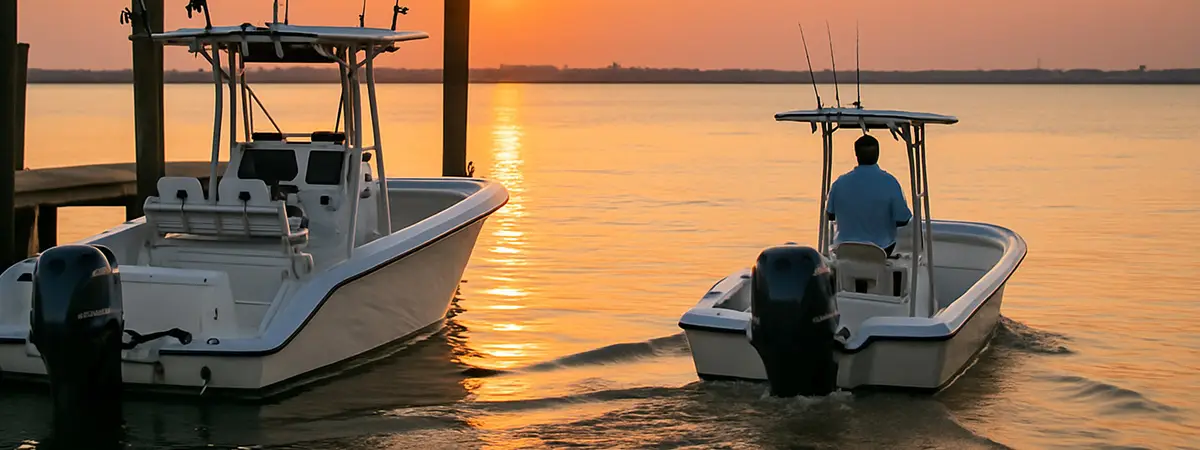
There will always be someone willing to do it cheaper — especially in busy charter markets or tourist-heavy areas. But trying to compete with the lowest-priced guides usually just leads to burnout, frustration and the wrong kind of clients.
Price shoppers tend to be the hardest to please and the quickest to complain. They’re often looking for deals, not quality, and they won’t think twice about canceling or demanding more than what was promised.
Instead of chasing those bookings, focus on attracting the kind of clients who value what you do. That means:
- Standing firm on your rates, even when others go lower
- Focusing on service, experience and consistency
- Using your website and messaging to speak to your ideal customer — not everyone
The more you compete on quality and experience, the less you’ll have to compete on price. And that’s how you build a business that lasts.
Be Willing to Say No
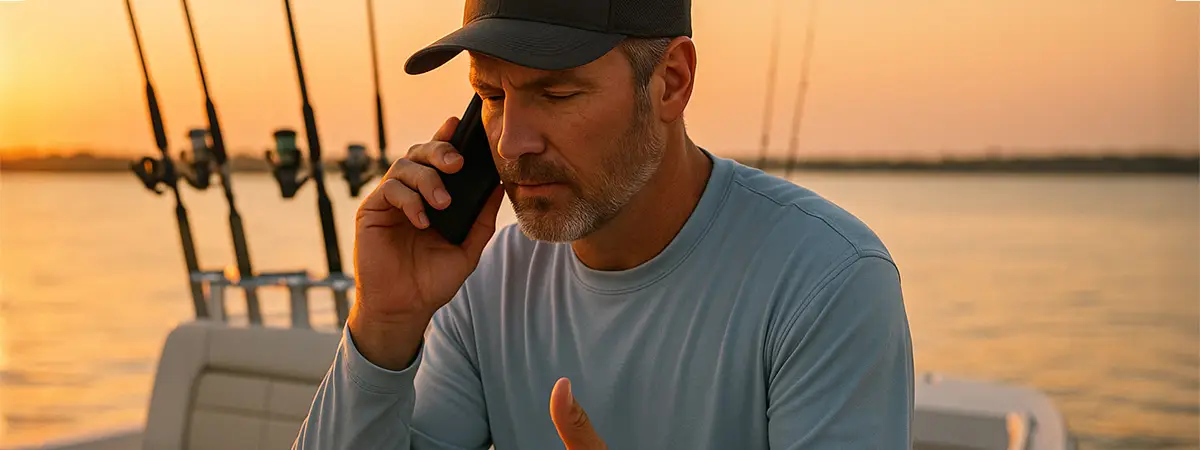
Not every inquiry is the right fit — and that’s okay. If someone’s only focused on finding the cheapest trip, there’s a good chance they’re not your customer. Saying yes to every low-budget request might fill your calendar, but it won’t move your business forward.
Confident pricing means being okay with walking away from the wrong clients. It’s better to book fewer trips at your real rate than to grind through a packed schedule of underpaid, high-maintenance charters.
When you value your time and experience, the right customers will too. And when those customers have a great trip, they’re far more likely to leave reviews, refer friends and come back again — all without questioning your price.
So What Should You Charge?
There’s no perfect formula, but a good starting point is to:
- Research 5–10 charters in your area offering similar trips
- Throw out the cheapest and most expensive — then aim to be near the top of the remaining group
- Adjust based on your experience, boat quality and reputation
Remember, it’s easier to raise your rates when you’ve built the brand and experience to support them — but that work starts now.
Confidence Comes from Clarity
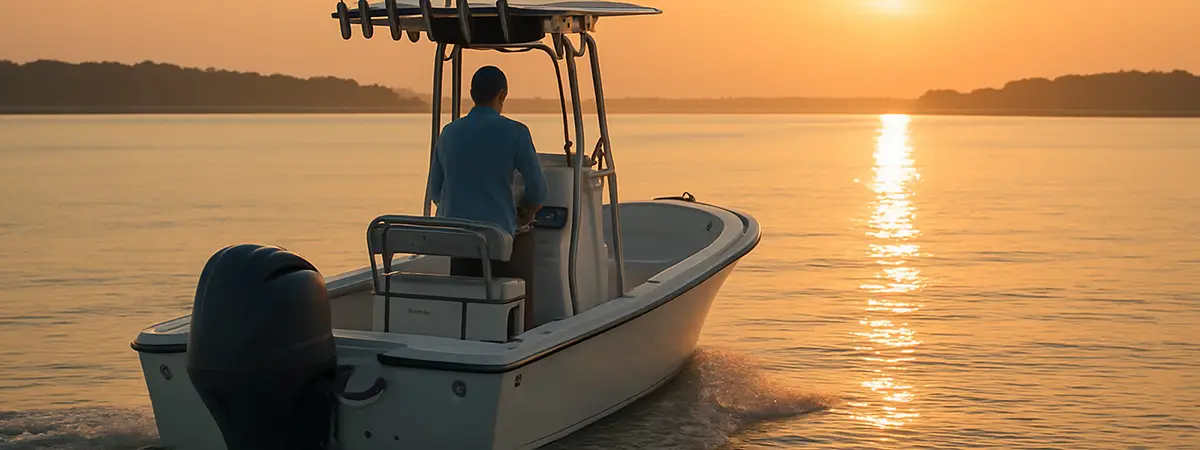
You don’t have to be the cheapest guide in town to stay booked. But you do need to understand your value, communicate it clearly and deliver an experience that backs it up. When you know your numbers, stay true to your brand and focus on the right kind of clients, you can price your trips with confidence — and build a charter business that actually works for you.
Fishing charters and guides who succeed long-term aren’t the ones chasing every dollar. They’re the ones who charge what they’re worth, fish the way they believe in and earn the kind of reputation that makes their price feel like a bargain.